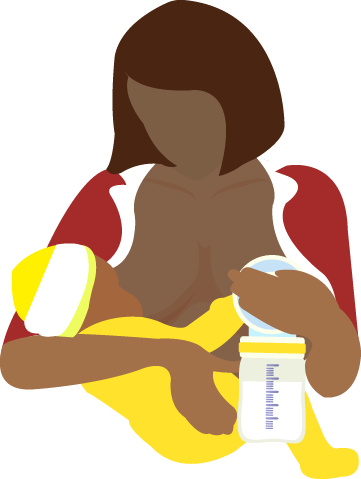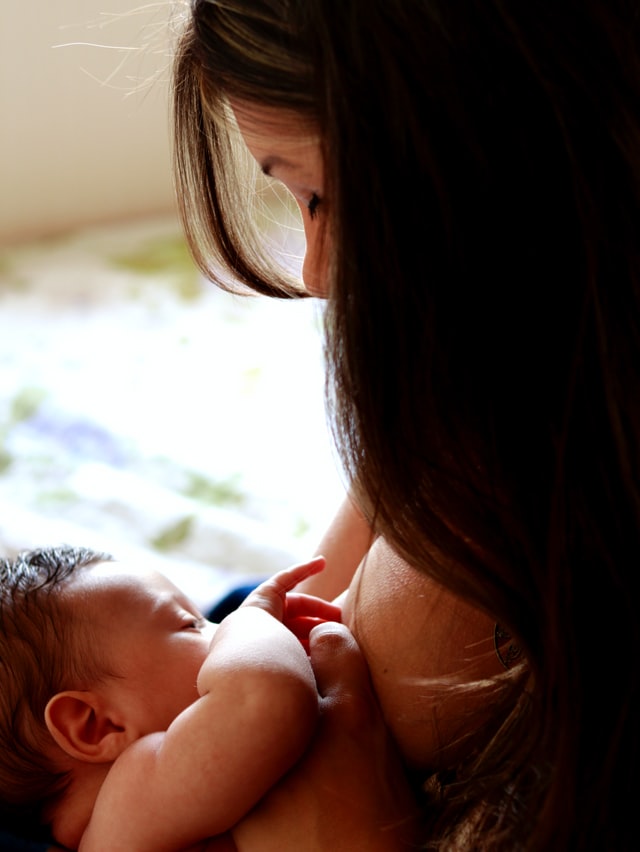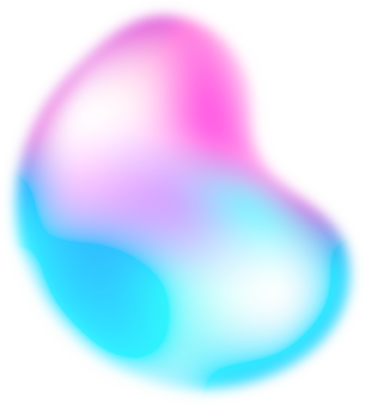Babies’ tummies are tiny. It doesn’t take much to fill your baby up, but you’ll need to feed your newborn baby a lot: 8-12 times in a 24-hour period. Feeding your baby that often will be good for your baby. It will also tell your body to keep making milk.
How do you know if your baby is getting enough milk? One of the easiest signs is to pay attention to what’s coming out the other end. The color, texture, and frequency of poops and wet diapers will tell you a lot. Other signs that your baby is getting enough milk may include:
Your baby is satisfied and content after feedings.
Your breasts may feel softer after feedings.
Your baby breastfeeds at least 8 to 12 times every 24 hours, including at night.
Your baby is gaining weight.
How much milk your baby needs will change as baby grows, and your body will adjust to those changes. If your baby has a growth spurt, your baby might want to nurse more often or for longer periods of time. Your body will adjust to that, too.
The important thing is to nurse as long and as often as your baby wants and to let your baby eat until full.
HOW IS MILK MADE?
During pregnancy, your breasts start getting ready to make milk. As milk making tissues rapidly grow, you may notice your breasts become fuller and more tender. After you have your baby, pregnancy hormones lower which then helps the lactation hormone, prolactin, to be released. Prolactin sends a message that tells your breasts to make milk. Both your hormones and your baby’s suckling cause your breasts to make milk. The more your baby nurses, the more milk you make.
When your baby suckles, another hormone, oxytocin, sends a message that tells the small muscles in your breast to contract. This muscle contraction moves the milk through the milk ducts. This is called the let-down reflex. It releases the milk into your milk ducts so you can breastfeed your baby.
WHAT IS THE DIFFERENCE BETWEEN COLOSTRUM AND BREAST MILK?
There are three phases of breast milk. Each one is vital to nourishing your baby.
Colostrum. This is the first milk produced by the breast right after birth. It is thick, yellow-ish, and rich in nutrients your baby needs in the first few hours and days.
Transitional milk. When mature breast milk starts to replace colostrum, it is called transitional milk. This is often what’s called “your milk coming in,” and it usually happens in your first week at home with the baby.
Mature milk. Mature milk looks thinner than colostrum but is still full of nutrients for baby. It starts about 10-15 days after birth. Mature milk will continue to change with your baby’s needs and tummy.
WHAT HAPPENS DURING THE FIRST FEW FEEDINGS?
You should feed your baby between 8-12 times within 24 hours. There is no set time for feedings. They may be 15-20 minutes per breast. They may be shorter or longer. Your baby will let you know when he or she is finished feeding. Your baby’s eating patterns may change from day to day. Just follow your baby’s lead, and that will help you build your milk supply.
Try feeding your baby on the fuller breast first until your baby releases the nipple or falls asleep. Then burp your baby and offer the other breast. Some babies feed from both breasts at each feeding, while other babies are satisfied after one breast. When your breasts feel full, it is important to nurse your baby. That will keep your breasts from becoming overfull or engorged.
Source: WIC Breastfeeding Support




